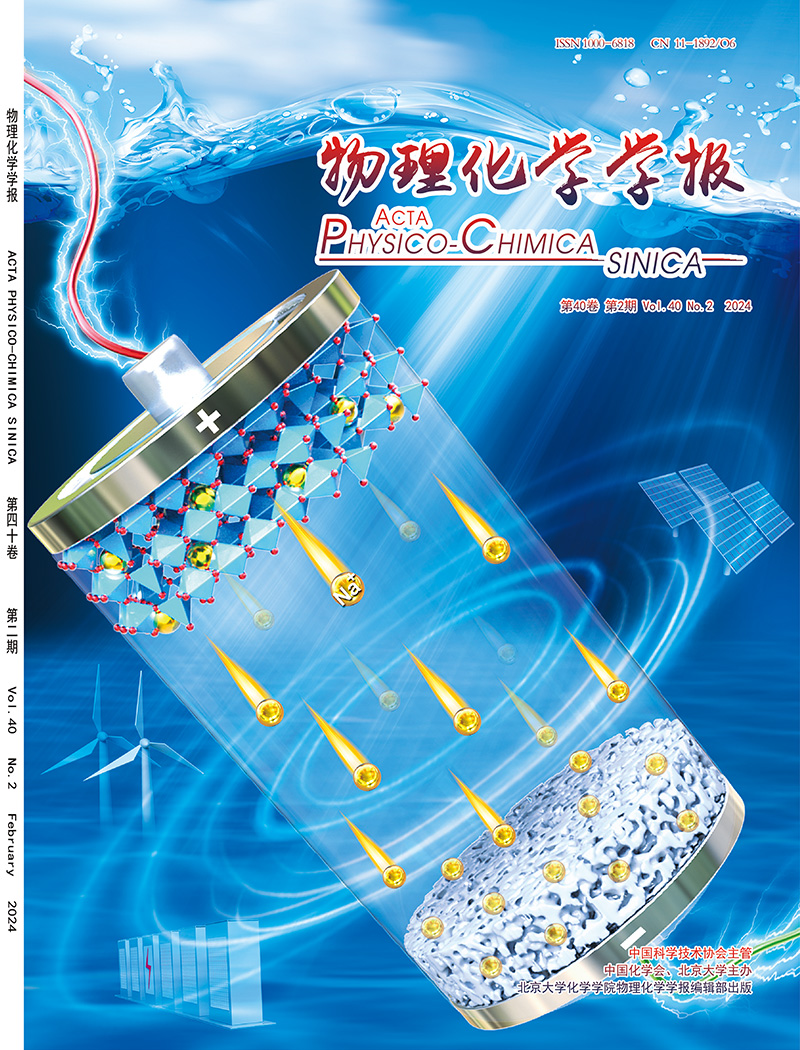Hierarchical MoS2/Ti3C2Tx heterostructure with excellent photothermal conversion performance for solar-driven vapor generation
IF 13.5
2区 化学
Q1 CHEMISTRY, PHYSICAL
引用次数: 0
Abstract
Metallic 1T Molybdenum disulfide (1T-MoS2) exhibits enhanced full spectral light absorption and prominent electrical conductivity, making it ideal for photothermal applications in conjunction with Ti3C2Tx MXene. Despite the challenges in increasing the 1T-MoS2 proportion within MoS2/Ti3C2Tx heterostructures and the incomplete understanding of the mechanisms governing their formation and properties, herein, a combined theoretical and experimental framework has been established, suggesting that the metallic characteristics of Ti3C2Tx and 1T-MoS2 could significantly improve photothermal performance through strong interlayer interactions and efficient electron transport. The hierarchical MoS2/Ti3C2Tx heterostructure has been fabricated through a one-step hydrothermal synthesis method with enhanced 1T-MoS2 proportion, which achieves multilayered wrinkled architecture resulting from the in-situ growth of MoS2 on Ti3C2Tx nanosheets. Notably, a remarkable peak photoheating temperature of 107 °C under an 808 nm laser with an intensity of 0.5 W·cm−2 is realized, demonstrating its exceptional photothermal conversion capability. By incorporated into a polyvinylidene difluoride membrane, the MoS2/Ti3C2Tx heterostructure functions as an efficient self-floating solar-driven steam generator, reaching an evaporation rate of 1.79 kg·m−2·h−1 and an evaporation efficiency of 96.4% under one solar irradiance. This study proposes a versatile strategy for the MoS2/Ti3C2Tx heterostructure, offering the potential for sustainable solar-driven vapor generation technologies.

具有优异光热转换性能的层叠MoS2/Ti3C2Tx异质结构,用于太阳能驱动蒸汽产生
金属1T二硫化钼(1T- mos2)具有增强的全光谱光吸收和突出的导电性,使其成为与Ti3C2Tx MXene结合的光热应用的理想选择。尽管在提高MoS2/Ti3C2Tx异质结构中1T-MoS2的比例方面存在挑战,而且对其形成和性能的控制机制还不完全了解,但本文建立了一个理论和实验相结合的框架,表明Ti3C2Tx和1T-MoS2的金属特性可以通过强层间相互作用和高效的电子传递显著改善光热性能。通过一步水热合成法,提高了1T-MoS2的比例,制备了MoS2/Ti3C2Tx层次化异质结构,通过在Ti3C2Tx纳米片上原位生长MoS2,实现了多层褶皱结构。值得注意的是,在强度为0.5 W·cm−2的808 nm激光下,实现了107°C的峰值光加热温度,证明了其出色的光热转换能力。将MoS2/Ti3C2Tx异质结构包埋在聚二氟乙烯薄膜中,作为一种高效的自浮式太阳能驱动蒸汽发生器,在一次太阳辐照下,蒸发速率为1.79 kg·m−2·h−1,蒸发效率为96.4%。本研究提出了MoS2/Ti3C2Tx异质结构的通用策略,为可持续的太阳能驱动蒸汽产生技术提供了潜力。
本文章由计算机程序翻译,如有差异,请以英文原文为准。
求助全文
约1分钟内获得全文
求助全文

 求助内容:
求助内容: 应助结果提醒方式:
应助结果提醒方式:


